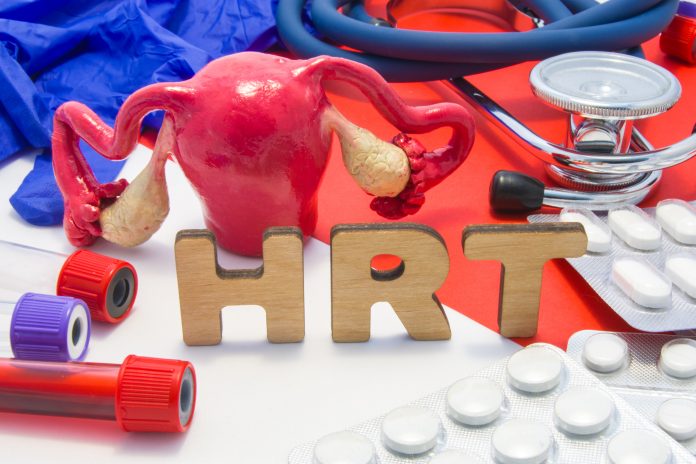Dr Deborah Lee, Sexual & Reproductive Healthcare Specialist, Menopause Specialist of Dr Fox Online Pharmacy, highlights the effects that menopause has on the heart and discusses how HRT could be beneficial to you
As you age, your heart ages too. This is a sad reflection on the passing of the years. However, as you can’t see what’s happening inside your chest, your heart grows older silently. You may not know that something has gone seriously wrong – until you have a shock diagnosis – such as a heart attack.
Interestingly, you are protected from heart disease compared to your male counterparts, just because you are female. Medical data confirm that heart disease is more common in men, until menopause when the risk for women rapidly catches up. Estrogen, it seems, carries some degree of protection for your heart.
There are two burning questions to answer –
- What happens to your heart at menopause?
- Does taking HRT reduce your risk of heart disease?
What happens to your heart at menopause?
When we talk about the heart, we’re really talking about not just your heart – but also your arterial circulation (the cardiovascular system).
The heart is a muscle, which pumps blood around the body and the lungs. Just like any other muscle, the heart has an arterial blood supply – the coronary arteries. The heart also pumps oxygenated blood into the aorta, the biggest artery in the body.
The arterial walls are also made of muscle, which means they can expand (dilate) and contract (constrict). Their muscular composition also lends them a degree of elasticity.
The artery walls are lined with a thin layer of cells called the endothelium. Many small molecules acting as chemical messengers, react within the endothelial cell walls, to maintain the health and function of the vessel.
Atherosclerosis
The process of atherosclerosis is an unfortunate outcome of living in the world today.
As we age, fatty deposits are laid down in the arterial walls. These then obstruct the flow of blood through the vessel. As these plaques enlarge, they can rupture and block the artery completely. This is what happens when you have a heart attack.
Atherosclerosis can occur in any artery in your body. In the cerebral arteries of the brain, this can lead to a stroke. In the aorta, this can lead to an aortic aneurysm – and rupture of the aorta.
Reducing atherosclerosis
You can reduce your risk of atherosclerosis by living a healthy lifestyle. This means stopping smoking, losing and controlling your weight, taking regular exercise and eating a healthy diet.
However – as a menopausal woman, should you now be adding HRT to this list of healthy lifestyle factors?
What happens to your heart at menopause?
As you approach menopause, your ovaries are failing, and no longer produce estrogen as they did in your earlier reproductive life. Your blood levels of estrogen levels fall dramatically. Although the average age of menopause is aged 51, your estrogen levels start to fall much earlier – over age 35, and again, in your 40’s. However, the drop sharply in the year or two before your last menstrual period.
The period of time when the ovaries are failing and up until the last menstrual period is called the perimenopausal transition. This is the time when women are most likely to suffer troublesome symptoms such as hot flushes and night sweats. It can last for 2-5 years. After the last period, you are now postmenopausal.
Estrogen has a number of positive effects on your cardiovascular system. These are outlined in the list below.
The lack of estrogen which occurs at the perimenopausal transition and persists after menopause – reverses these effects. After menopause you will no longer be getting the estrogen benefits on the list below.
Estrogen effects on the cardiovascular system
Here’s a list of positive things that estrogen does for your cardiovascular system –
Estrogen –
- Lowers total cholesterol, increases HDL (good cholesterol) and lowers LDL (bad cholesterol) (Whitcroft 1994). It also accelerates the clearance of small LDL particles which can become embedded in the endothelium and contribute to plaque formation (Campos 1997).
- Benefits insulin and glucose metabolism and reduces insulin resistance (Bitoska 2016).
- Leads to increased nitric oxide production in the vascular endothelium. Nitric oxide has a vital role in the control of blood pressure and platelet function (Nevzati 2015).
- Plays an important role in vascular remodelling – this is the structural development of new blood vessels which occur over time as a physiological response for example, to ageing, and healing.
- Acts in the kidney in the renin-angiotensin system, the body’s mechanism for controlling salt and water, and helps maintain blood pressure. Reduced estrogen levels at menopause increase your risk of developing high blood pressure (O’Hagan 2012).
- HRT does not cause weight gain. Central body fat is associated with insulin resistance. By lowering insulin resistance, it may even promote weight loss (Chmouliovsky 1999).
What does research show?
There are two types of medical studies
- Observational studies – which report observations in specific groups or populations.
- Randomised controlled trials (RCT’s) – these take a group and divide the group at random into two. One half takes the product being researched, and the other half take a placebo ( a dummy pill). The participants are blinded, meaning they don’t know if they are taking the product or the placebo. Usually, the study investigators don’t know either.
RCT’s give the strongest proof of benefit. However, observational studies still give useful information and should not be ignored.
Many observational studies have reported on the cardioprotective effect of HRT.
For example, the 2001 Nurse’s Health Study followed up 2489 postmenopausal women who had had a previous heart attack or had a confirmed diagnosis of atherosclerosis, for 20 years. The study reported a 40% reduction in coronary heart disease among HRT users. A significant trend was observed for decreasing cardiac events with longer-term use of HRT.
In terms of RCT’s, the 2002 Women’s Health Initiative (WHI) trial has caused controversy and confusion. The study was set up to study the risks and benefits of HRT in healthy postmenopausal women. 16,608 women were randomised to receive HRT or placebo. The study was then terminated prematurely because the ceiling number of breast cancer cases had been reached (the risk of breast cancer and HRT is not being discussed in this article but you can find out more here ). The study was reported soon after this, as showing no reduction in the risk of coronary artery disease.
However, some years later, after 13 years of follow up, a statistically significant reduction in coronary artery disease/ heart attacks was indeed calculated. in those women who continued to take estrogen-only HRT, compared to those who took the placebo.
In fact, experts have now reviewed this data and concluded that HRT if started between the ages of 50-59, or within 10 years of onset of menopausal symptoms, is not associated with any increase in stroke or heart attack, and may indeed offer cardiovascular protection.
The benefits of using estrogen in this age group, for the majority of women, vastly outweigh the risks.
What type of HRT is recommended, and when?
Many studies, however, have concluded that the dose, formulation and timing of onset of HRT use are important.
- HRT dose – Younger women need higher doses of HRT to control menopausal symptoms. However, older women get substantial benefits from lower doses.
The lowest effective dose should always be chosen, and this will reduce as a woman gets older.
- HRT formulation
Estrogen-only or combined?
Women who have had a hysterectomy do not need progesterone and should be advised estrogen-only HRT.
For women who have a uterus, the progesterone component is definitely required. Unfortunately, the type and dose of progesterone can negate some of the estrogen benefits. This should be discussed with your doctor.
Tablet or patch?
Some studies have shown clinical benefits from the use of transdermal (patch) HRT compared to use of a tablet. This is because the hormones pass straight into the bloodstream through the skin without passing through the gut and the liver.
HRT patches do not affect blood clotting and may be preferable for women with risk factors for venous thromboembolism (blood clots). This includes women who are overweight/obese, and older women.
- HRT timing – Much HRT research has now firmly established that to get the best benefits from HRT, it should be started early in the perimenopausal period and used for 5 -10 years. This is called ‘the window of opportunity.’ If women miss this and want to start HRT later, over the age of 60, this is when they may incur a small increase in cardiovascular risk.
To quote Dr Nick Panay, Consultant Gynaecologist and Menopause Specialist (Climacteric 2014), with an increasingly elderly female population, and the growing problem of obesity, we face a “silver tsunami” of disability and disease. HRT prescribing has fallen by 75% over the past 20 years due to the negative publicity surrounding it. In truth, appropriate use of HRT – that is the use of HRT through the window of opportunity – is misunderstood and often over-looked, key tool, for disease and disability prevention.
Choosing to take HRT
It’s always important to have a thorough consultation with your doctor about the pro’s and con’s, of HRT, and to fully understand the risks and benefits. However, after many years of negativity and sensationalist reporting about HRT, authorities including The National Institute for Health and Care Excellence (NICE), and The British Menopause Society (BMS) all firmly endorse the use of HRT.
HRT offers many physiological benefits to keep your heart healthy.
Don’t leave it too late!
For more information
- Women’s Health Concern – HRT Benefits and Risks
- British Menopause Society – Consensus statement 2016 – Hormone Replacement Therapy
- Menopause Matters – The UK’s most popular menopause website.











